| Courtney Kowalke |
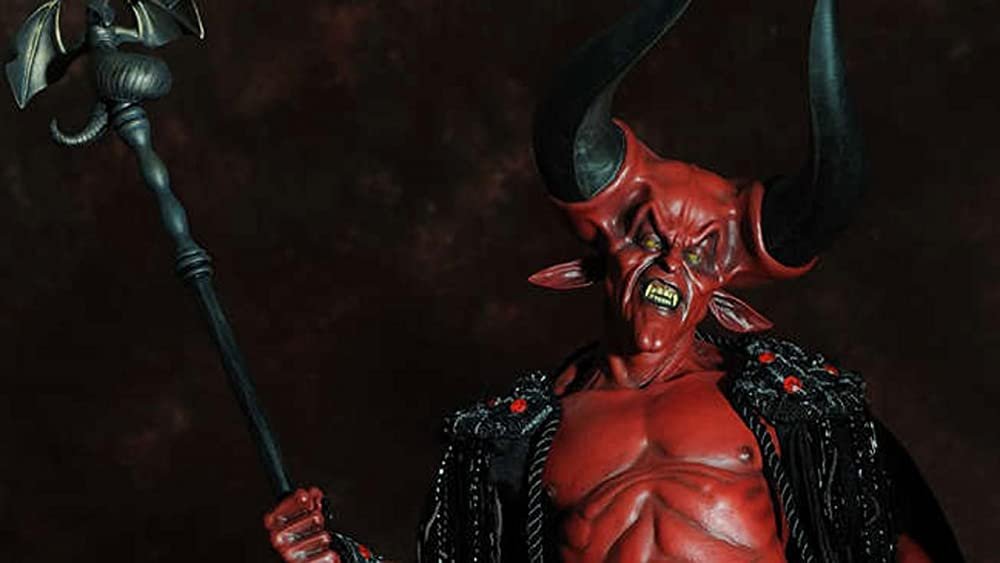
Image sourced from Geek Tyrant
Legend plays at the Trylon Cinema (in stunning 35mm) from Friday, April 26 through Sunday, April 28. Visit trylon.org for tickets and more information.
What is the first movie you remember seeing Tim Curry in? It is a question of when you first saw him in something, not if you have ever seen him in something. The British actor has been an inescapable presence on the silver screen since 1975.
Incidentally, my answer to the opening question is Muppet Treasure Island (1996), where Curry played Long John Silver. I wasn’t old enough to know and recognize Curry then, but I definitely noticed four years later when Curry appeared as both the thieving tech mogul Roger Corwin in Charlie’s Angels—released in the U.S. November 3, 2000—and voiced the kidnapper and slave-driver Slagar the Cruel in the second season of Redwall—which premiered November 4, 2000. I was obsessed with these two pieces of media, and at the age of 10, the concept of “Tim Curry” began coalescing in my mind. This is one person. This is what he looks like and this is what he sounds like, and he is in movies and TV shows I watch sometimes.
Maybe my opening question should have been “What is the first movie you remember hearing Tim Curry in?” It might be because that’s what first caught my attention, but I think Curry’s voice is the key to his continued success as a villain. Standing five feet and nine inches tall, Curry isn’t the most physically imposing person; he doesn’t tower over his co-stars. He doesn’t need to, though. Curry has charisma. He has screen presence. With a look or a gesture or an inflection, Curry is able to convey that he is a man who is up to something—usually, something sinister.
Curry’s voice acting played a large part in my childhood. He’s Hexxus, the spirit of destruction in FernGully: The Last Rainforest (1992). He’s horror-writer-turned-warlock Ben Ravencroft in Scooby-Doo! and the Witch’s Ghost (1999) (a classic among my friends, at least). He’s nature documentarian and bumbling father Nigel in The Wild Thornberrys (1999-2004), who my friend KimSue argues is a villain because what type of parent leaves their two daughters alone with a feral child and a chimpanzee all day every day? If there’s any kind of mad scientist, check the end credits for Curry—off the top of my head, I know he has voiced Doctor Calamitous in every film or television adaptation of Jimmy Neutron since 2001. Researching for this article is also how I learned Curry played the antagonist Cardinal Richelieu in The Three Musketeers (1993) and voiced the antagonist Philippe in Barbie and the Three Musketeers (2009). I have a hunch that in his personal life, Curry’s sense of humor is absolutely killer.
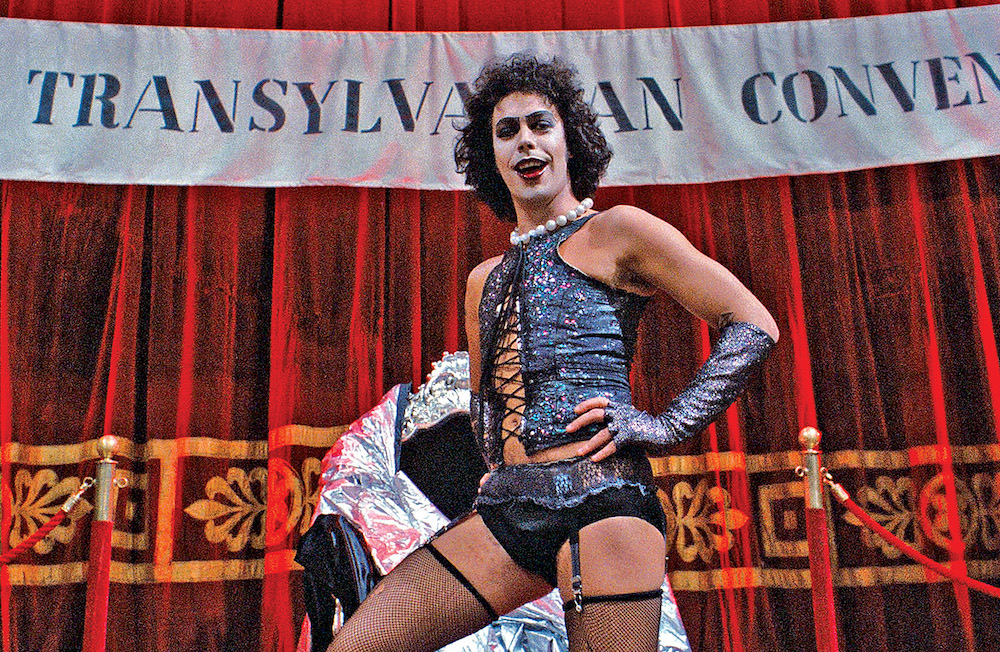
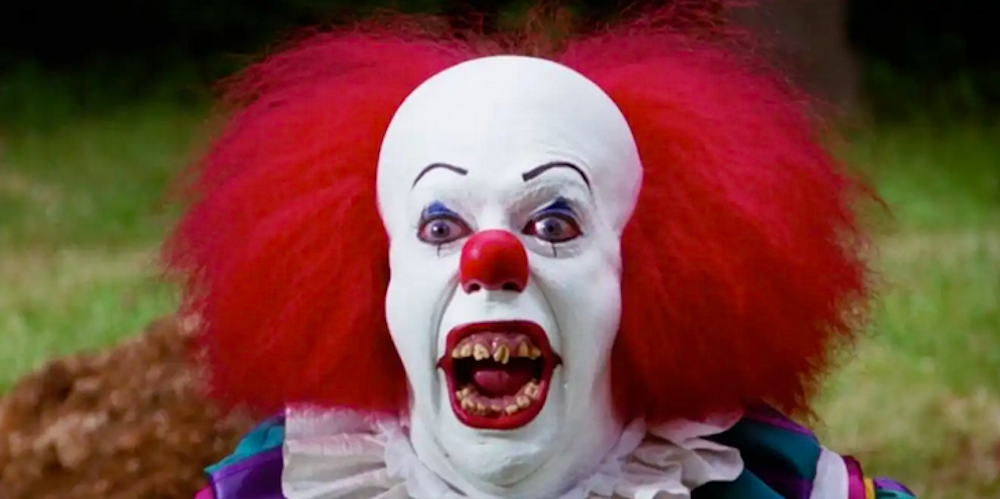
Left image sourced from Stamford Archive, right sourced from Gizmodo
Curry is maybe even more well-known for his live-action appearances. After appearing in the stage version of The Rocky Horror Show from 1973 to 1975, Curry made the leap to film reprising his role as Doctor Frank N. Furter in The Rocky Horror Picture Show (1975). Frank is unapologetically brilliant and manipulative, and Curry’s manic energy sells the role completely. He makes Frank look impossibly cool compared to the movie’s designated ‘heroes’ Brad and Janet. Curry further made his mark on the horror genre as the titular eater of worlds and of children in the 1990 miniseries IT. I actually like clowns, but you could not pay me enough to get within ten feet of IT’s preferred form, the monstrous Pennywise.
Equally iconic among fantasy buffs is Curry’s appearance as the villain the Lord of Darkness—or simply Darkness—in Ridley Scott’s Legend (1985). Curry’s iconic voice is distorted to a horrific and impressive degree, but his makeup and costuming is the most major triumph here. Darkness is the devil incarnate, all red skin and clawed hands, his feet hoven and his horns spiraling. The attention to detail in Darkness’s appearance is a feast for the eyes.
The practical effects in Legend come courtesy of Rob Bottin, who was nominated for an Academy Award for his work in the film. Bottin came to Legend fresh off the set of John Carpenter’s cult classic The Thing (1982), excited to design fantasy creatures that would be front-and-center instead of prosthetics that would appear only in one or two scenes. Making these creatures was a huge undertaking—Bottin and his crew made life casts of the actors’ faces to draft and edit their initial designs.1 Each actor required eight to twelve prosthetic pieces, each piece applied individually so it would move along with their muscles. Three makeup artists worked on one actor at a time for an average of three-and-a-half hours.1
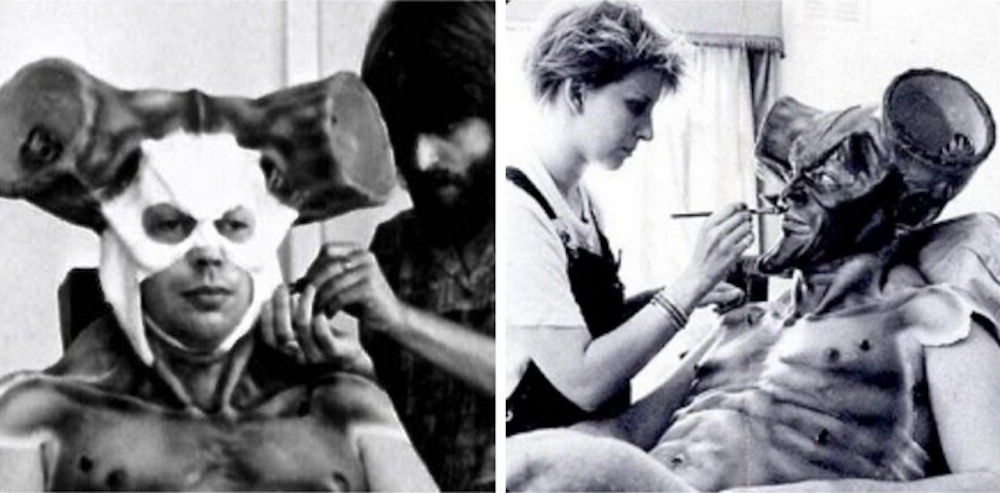
Image sourced from Monsters of Makeup
Notice that it was an average of three-and-a-half hours. In an interview for Cinefantastique magazine, Scott noted that Curry’s Darkness look usually took five-and-a-half hours, and that in the early days of filming, the process took eight hours.2 Before any prosthetics and makeup could be applied, Curry had to put on the harness for those incredible horns. The horns themselves were both three feet long and made of fiberglass. Darkness has an aversion to light and also to wearing shirts, so Curry’s upper body had to be made up as well.
Taking the makeup off was no walk in the park either. According to Scott, “Enclosing Curry’s body totally in makeup meant that he had to be more than patient in getting it off. He had to sit in a bath for an hour to liquefy the soluble spirit gum. Unfortunately [Curry] got impatient and claustrophobic and too hurriedly pulled it off which meant he tore his skin off as well. We had to shoot around him for a week to calm him down.”2
Maybe that’s the real reason I love watching—or listening to—Tim Curry act. Curry commits to the bit. No matter how strange the role or how silly the dialogue or how uncomfortable the makeup, Curry inhabits his characters to the fullest.
This is especially fun when said characters are the villains. A villain has a precarious place in a story’s narrative. In most stories—especially in a classic epic fantasy like Legend—Leyou know that the villain won’t win. Legend’s hero, Jack O’ the Green, is played by Tom Cruise, the textbook definition of a Hollywood leading man. Of course Tom Cruise is going to win the final battle. The villain needs to be believable as a threat, though. There needs to be a tension, just the slightest possibility that they might win by some trick or trap.
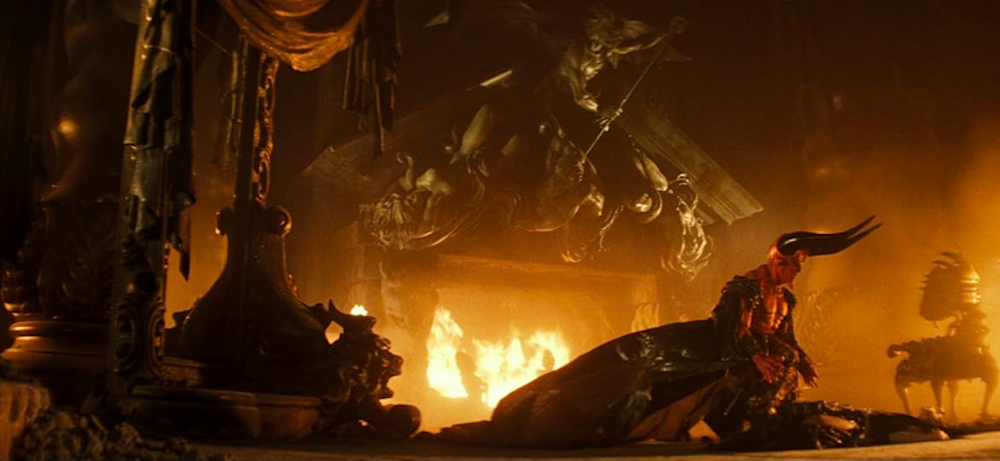
Image sourced from Internet Movie Database
Curry has the perfect energy to make a villain believable. No matter the role, Curry brings his all. He is present, and that makes his villains formidable characters. Larger-than-life heroes grate on my nerves; I already know they are going to win. Heroes acting like they know how great they are is just annoying. Grandiose villains, though? Villains who act like they’re god’s gift to Earth and like their plans can’t possibly fail? They probably won’t win, but what if? I get a thrill watching Darkness because Curry plays him as the biggest and baddest threat in the world of Legend, and I want to see how much he can get away with before he inevitably has to fall.
There is also a fantastical element to being a villain separate from whatever costumes or makeup and actor happens to be wearing. If you stop to think about it, who acts like fictional villains in real life? Maybe I live in a bubble, but most people I know don’t have grand schemes or plots—they’re just trying to do their jobs and make it through their days. A villain exists in a heightened version of reality regardless of their settings. And again, Curry comes through and commits to whatever reality is for his characters. Gender-bending mad scientist from another planet? Eldritch shapeshifter from another dimension? Giant red demon who wants to create an eternal winter. Curry is the perfect actor for the job. He brings an earnestness to his roles that makes the fantastic seem real.
In the 39 years since Legend, Curry’s career has slowed significantly. This is primarily due to Curry suffering a massive stroke in July 2012; he has limited mobility now and typically appears using a wheelchair in public. As I hypothesized earlier, Curry said having a sense of humor helped him get through his early days of physical and speech therapy.3
Curry has never stopped acting, though. Fortunately for my nostalgia, most of his roles these days are in animated movies and cartoons. His rich baritone voice is present in full force as Chancellor Palpatine in two seasons of Star Wars: The Clone Wars, as another evil clown (this one a puppet!) in Gingerclown 3D (2013), and as the appropriately-named Neville Baddington in Saving Santa (2013). I can report that Curry is still fully committing to these bits—I didn’t even recognize him as the sinister Auntie Whispers the first time I watched Over the Garden Wall (2014). It’s nice to know that Curry—who celebrated his 78th birthday this April 19th—is still giving his all to these roles. He’s still there, lurking in the shadows, and at least my world is all the brighter because of it.
References
1 Steve Biodrowski, “Legend Makeup,” Cinefantastique, January 1986, 25, https://archive.org/details/cinefantastique_1970-2002/Cinefantastique%20Vol%2015%20No%205%20%28Jan%201986%29/page/n23/mode/2up
2 Alan Jones, “The Making of Legend,” Cinefantastique, January 1986, 22, https://archive.org/details/cinefantastique_1970-2002/Cinefantastique%20Vol%2015%20No%205%20%28Jan%201986%29/page/n21/mode/2up
3 ABC News, “Tim Curry Relies on His Humor While Recovering From Stroke,” June 8, 2015, https://abcnews.go.com/Entertainment/tim-curry-relies-humor-recovering-stroke/story?id=31620996
Edited by Olga Tchepikova-Treon
